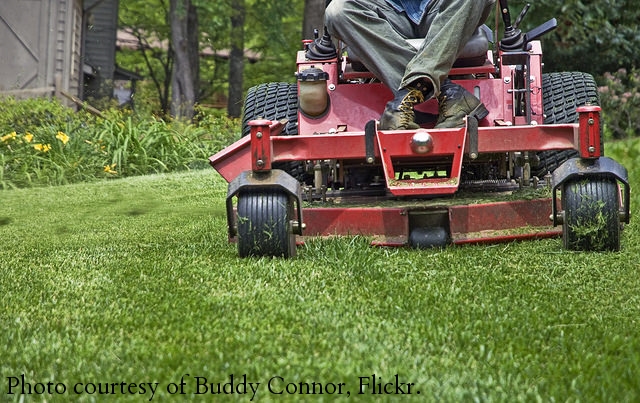
As you know, there is a lot more that goes into quality lawn care besides just revving up the mower. You must also ensure that your lawn mower is cleaned regularly and in proper condition. You can do yourself a huge favor for the future by following simple and easy steps to keep your mower clean and operating effectively.
Here are 5 maintenance tips that can improve the quality of the cut and extend the mower's life:
1. Check, clean, and replace air filter.
The air filter pulls air through the filter from the top and releases air at the bottom. If it is working properly, all the dirt will be trapped at the top of the filter instead of traveling through the foam layers. However, too much dirt at the top will block air from traveling through the filter, so it is important to clean or replace this regularly.
-
Start by brushing off the heavy dirt with your hands.
-
Next, wash the filter with soap and water. Dish soap that can cut through grease is optimal.
-
Squeeze dry and pat with paper towels.
-
Allow to air dry in the sun.
After cleaning the air filter, you will have to re-oil it. The oil is what traps the dirt at the top of the filter.
-
Place the filter in a Ziploc bag and pour oil into the bag.
-
Work the oil into the filter by squeezing from the outside of the bag. This prevents oily hands
-
Remove excess oil with a paper towel to prevent oil from dripping into the carburetor.
-
Place the clean and freshly oiled filter back into the lawn mower. Make sure that it fits without any gaps and close the lid.
2. Clean the underside of the mower deck daily
When you mow grass, excess dirt and grass sticks to the underside of the deck. Over time this layer of cut grass builds up underneath the deck, which can disrupt air flow, reduce the quality of the cut, and cause the deck to rust faster because of the locked in moisture.
I know this is concerning, but don't panic. There is an easy way to clean the underside of the deck without even removing the deck from the mower.
-
Use a jack-stand, forklift, or another way to pick up the mower to expose the underside.
-
Scrape the dirt and grass using either a putty knife, plastic scraper (if you want to be extra cautious of scraping) or, in situations of extreme build-up, a pneumatic needler, which is super easy but avoid scraping too hard.
Once you start to clean the deck routinely, it will become much easier and you can use a sponge or cloth.
3. Sharpen your blades at least 3 times a year.
Dull mower blades tear grass instead of cut it, which creates jagged tips on the grass. Jagged grass tips will quickly cause the grass to turn brown and dry looking even if the grass is watered regularly.
Here's how to sharpen the blades yourself:
-
Again, use a jack-stand to prop the mower on its side.
-
Remove the spark-plug to prevent the mower from starting up.
-
Using a wrench, remove the nut that secures the blade to the mower deck. Wedge a piece of wood between the blade and the deck to prevent the blade from spinning, and gently remove the blade.
-
Hold the blade at about a 45 degree angle and sharpen it using a file or grindstone.
-
Check the balance of the blade by spinning it on a rod or screw.
-
Secure the sharpened blade back on the underside of the mower deck.
Remember, to always use safety precautions such as leather gloves and safety goggles.
4. Run the engine at the right RPMs.
RPM refers to Revolutions Per Minute, which measures the frequency of rotation or the number of turns completed in one minute around a fixed axis.
Running the mower at low RPM keeps the engine from getting enough air and lowers the blade speed. This reduces the quality of the cut.
Because every mower is different, check your manual for instructions. You should find the proper RPM speed and steps on how to modify the RPM.
5. Check the tire pressure.
Low tire pressure can lead to an unbalanced cut. Make sure that all tires are filled routinely. This is perhaps the simplest of the five tips, but it is often the most overlooked. It may not seem like a noticeable difference, but an unbalanced cut will continue to look even more uneven as the grass grows.








